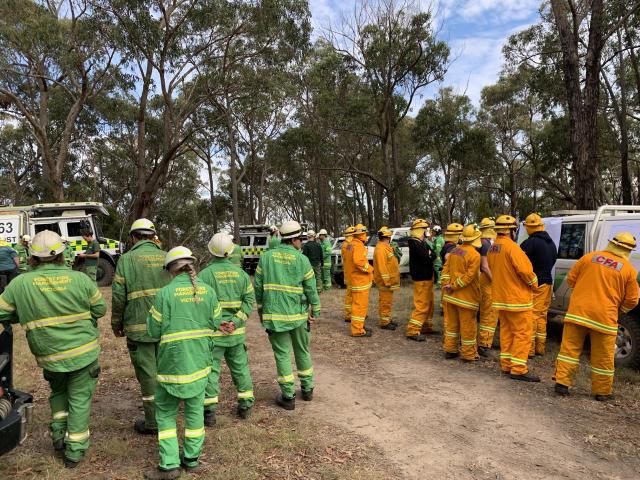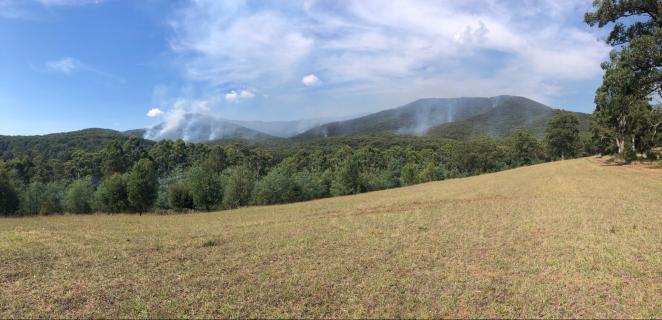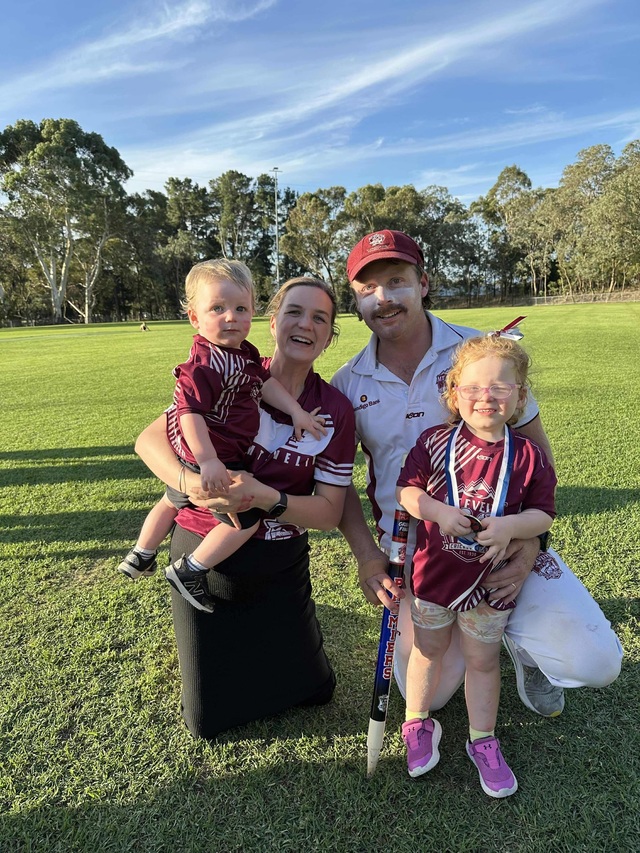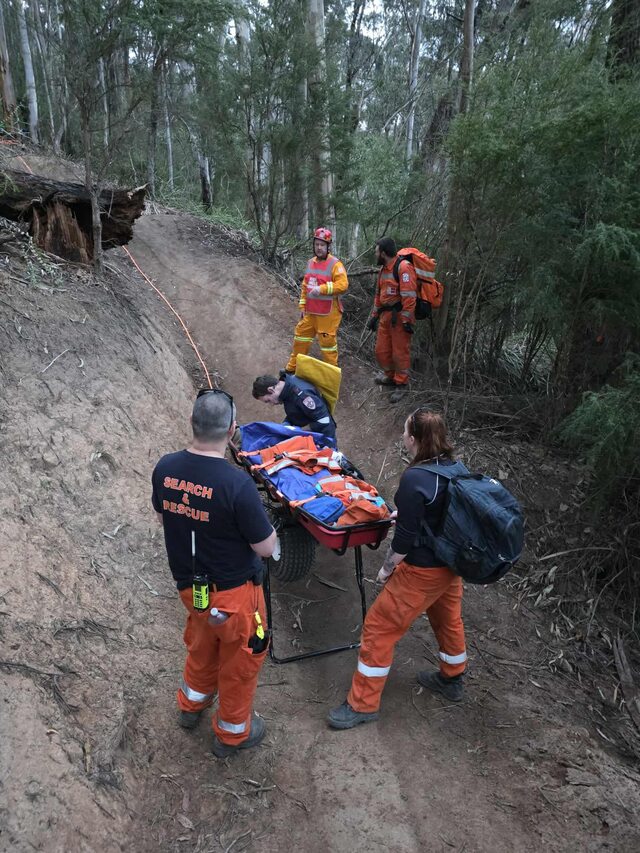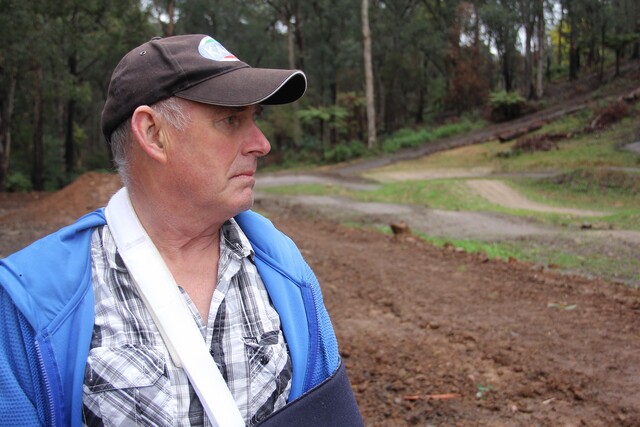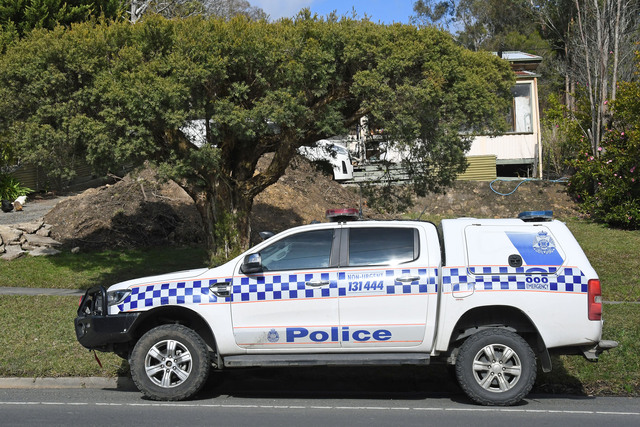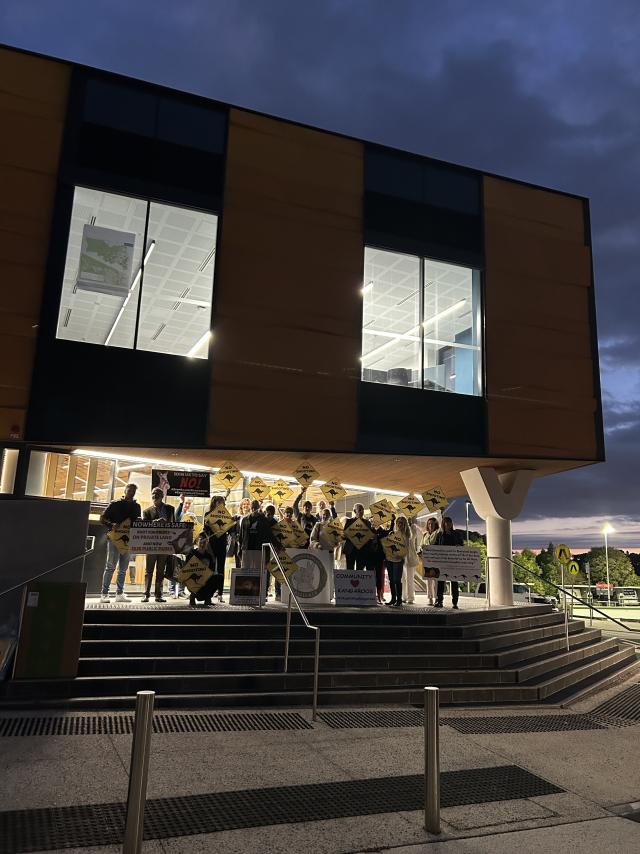Thick smoke blanketed the eastern suburbs and even extended into the city over the long weekend as planned burns in Mount Evelyn and Montrose formed part of the autumn fire reduction strategy.
As the grey haze started filling the air, social media comments went rampant from residents in Mooroolbark, Lilydale and across the Yarra Valley who were concerned about the cause, with fires also in Powelltown, McMahons Creek and Lysterfield.
Lilydale SES and local CFA crews had to issue pleas on social media not to call triple zero in an attempt to alleviate firefighters being called out to the sites of the burns as panic settled in.
Emerald resident Kate Forster has researched the impacts of biomass smoke pollution as a concerned citizen for many years and said she was deeply worried about the impact of the smoke on everyone’s health.
“The community needs to know how to protect themselves and the information on that has been inadequate,” she said.
“Wood smoke’s health impacts are similar, some studies indicate, to tobacco smoke. Most people wouldn’t allow someone these days to smoke beside their children but the amount and extent of smoke from the weekend incident was much greater than that.”
Other social media posts related to the necessity of burning over a long weekend when local events like the three day Warburton Trail Fest were being held.
In Warburton at 9am on Sunday 13 March, according to the AirRater app that tracks local air pollution conditions, the result was returning a ‘very poor’ reading compared to the EPA’s ‘fair’ forecast on Saturday 12 March.
Ms Forster said the air pollution showed a reading of PM2.5 211 µg/m3, which was worse than the most polluted world cities.
She said most Australian homes are poorly sealed, so closing doors and windows usually isn’t sufficient when there’s smoke in the air but it’s not always feasible that people will be able to escape the smoke in a sealed building with air purification systems or be able to leave and stay elsewhere either.
Forest Fire Management Victoria (FFMV) deputy chief fire officer Tamara Beckett said sometimes the window of burning is small and with so many areas to cover in the state, there can be many burns in close proximity to each other.
“Autumn in particular is our peak burning period because it tends to be when we get the right balance of fuel moisture and weather conditions,” she said.
“So warm stable weather during the day, that cools down overnight where the moisture returns overnight, that’s when we can deliver burns safely.”
Ms Beckett said calculating the right conditions does take quite a bit of research and unfortunately, being autumn, public holidays, school holidays and Easter all fall within that time frame.
“We basically have to take every opportunity we have to burn. We’ve got a big program and essentially quite a short window of the right weather conditions,” Ms Beckett said.
“We do consider a whole range of factors. We’ve got a number of burns that are near schools or childcare centres or hospitals and we consider all of the potential impacts.”
While forecasting the weather and wind direction as best as FFMV can, Ms Beckett said on the day of a burn it can vary meaning smoke will blow in all directions.
“When we do burns in the Yarra Valley or up in the Dandenongs, this smoke can settle down overnight with those cooler, damp conditions,” she said.
“Sometimes there’s what’s called an inversion layer, which you can’t see but essentially, it’s like a lid in the atmosphere that keeps the smoke in and we try and avoid burning in those conditions to the extent possible but we can’t always forecast it.”
FFMV uses social media, electronic road signs and other channels like SMS messages, as well as contacting local businesses and residents directly, where they can, to alert people of planned burns but are aware that is not always enough.
More planned burns are scheduled for the area including Sassafras, Ferny Creek and Mount Dandenong.
EPA Victoria was contacted for comment.

